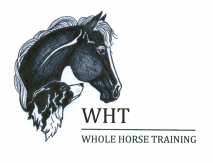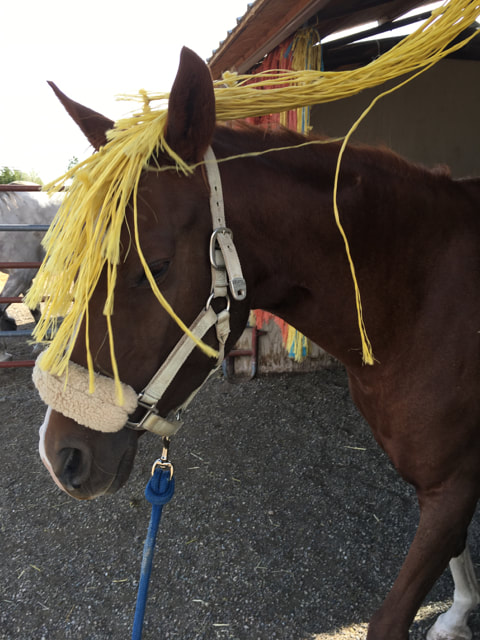Jalila comes through the string curtain hanging at the front of her shed. My friend titled this picture Silly Jilly.
I am behind in my posts and there’s nothing I can do about it. No excuses. No good reasons. Just busy, like everyone else I know.
The Straightness Training (ST) exercises designed to help humans better understand herd dynamics were especially enlightening for me. A lot of the “natural” horsemanship programs address a form of these ideas but they have never rung true for me. Marijke’s explanations and guidance have given me tools to improve my relationship with the mares and bring it to a completely new level, one of true friendship.
It was fascinating to do this exercise with two different horses, Jalila and Shiraz. Shiraz is dominant in the pen but submits to me more than I’d like. Her past experiences with what is commonly called “joining up,” caused her to view being with me as a negative, though less negative than going away from me. Neither situation was positive in her eyes. Establishing confidence and trust is needed for her so we can come to a good working relationship.
Jalila, on the other hand, is totally submissive to Shiraz in their pen, but makes every effort to dominate me. She is not aggressive and some of her efforts are subtle. After watching the videos and playing with the Meet & Greet concepts I found that I was misinterpreting some of Jalila’s communications. I was misreading concentration as anger or a nasty attitude. I had also mistakenly overlooked some tiny aggressions as insignificant. Keeping us on an even keel can be as simple as not allowing that ubiquitous 4” half-step or seemingly innocuous lean into my space. Fascinating! After several days of entering the herd with new tools for influencing and interpreting the horses’ responses, every aspect of our interaction, be it in the pen, at the hitching post, or in the arena has shifted to a place of mutual understanding.
The Straightness Training (ST) exercises designed to help humans better understand herd dynamics were especially enlightening for me. A lot of the “natural” horsemanship programs address a form of these ideas but they have never rung true for me. Marijke’s explanations and guidance have given me tools to improve my relationship with the mares and bring it to a completely new level, one of true friendship.
It was fascinating to do this exercise with two different horses, Jalila and Shiraz. Shiraz is dominant in the pen but submits to me more than I’d like. Her past experiences with what is commonly called “joining up,” caused her to view being with me as a negative, though less negative than going away from me. Neither situation was positive in her eyes. Establishing confidence and trust is needed for her so we can come to a good working relationship.
Jalila, on the other hand, is totally submissive to Shiraz in their pen, but makes every effort to dominate me. She is not aggressive and some of her efforts are subtle. After watching the videos and playing with the Meet & Greet concepts I found that I was misinterpreting some of Jalila’s communications. I was misreading concentration as anger or a nasty attitude. I had also mistakenly overlooked some tiny aggressions as insignificant. Keeping us on an even keel can be as simple as not allowing that ubiquitous 4” half-step or seemingly innocuous lean into my space. Fascinating! After several days of entering the herd with new tools for influencing and interpreting the horses’ responses, every aspect of our interaction, be it in the pen, at the hitching post, or in the arena has shifted to a place of mutual understanding.


 RSS Feed
RSS Feed